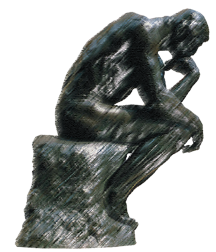3- The tools
“I Keep six honest, serving men (they taught me all I know);
their names are WHAT and WHY and WHEN and HOW and WHERE and WHO.”
Rudyard Kipling, “The Elephant Child” Just So Stones, 1902)
their names are WHAT and WHY and WHEN and HOW and WHERE and WHO.”
Rudyard Kipling, “The Elephant Child” Just So Stones, 1902)
|
For the purpose of this discussion, we will address only one of these “honest serving men.” His name is “Who.” Not however, as expected, who committed the crime! That question is too broad and potentially universal in its response, often creating a reactive approach to an investigation. With the possibility of cascading leads, there is a need to focus on the probable while eliminating the possible. This objective can be aided by posing a question which may begin to chisel away the possibilities and reveal the probabilities. This is the first step in effectively utilizing scarce departmental resources. We suggest that the primary question is “who is the victim?” The process for answering this question incorporates a comprehensive examination of the victim. In a sense we will conduct a personality autopsy of the victim, hereinafter referred to as the victimology.
|
victimology
|
|
- Age/description
- Sex - Race - Marital status/adjustment - Intelligence - Scholastic achievement/adjustments/academics - Lifestyle - Personality style - Demeanor - Employment/occupation - Social Status - Friends/associates (type/number) - Income (level, source) - Family components - Domestic relations/environment |
- Alcohol/drug use/abuse
- Dress style (typically/proximate to crime) - Handicaps (physical/mental) - Transportation - Reputation - Interests/habits - Fears - Dating status/habits - Leisure activity - Criminal history - Assertiveness (physically/verbally - in variable settings) - Likes and dislikes - Religion and Sexual/adjustments |
victim's Activities & Associated locations
- Residence in relation to crime scene
- Employment in relation to crime scene
- Victim’s last known sighting and activities
- Significant events before the crime
- Initial contact/abduction site between the victim and offender
(proximate to crime)
- Crime scene
- Disposal site
- Physical injuries
- Sexual assault
- Employment in relation to crime scene
- Victim’s last known sighting and activities
- Significant events before the crime
- Initial contact/abduction site between the victim and offender
(proximate to crime)
- Crime scene
- Disposal site
- Physical injuries
- Sexual assault
As we analyze the foregoing elements of victimology, we may attempt to answer the related questions of what, when, where, why and how. This will reveal the interdependent and dynamic relationship between each referenced item while leading the investigation toward the final product... the most probable type of suspect.

